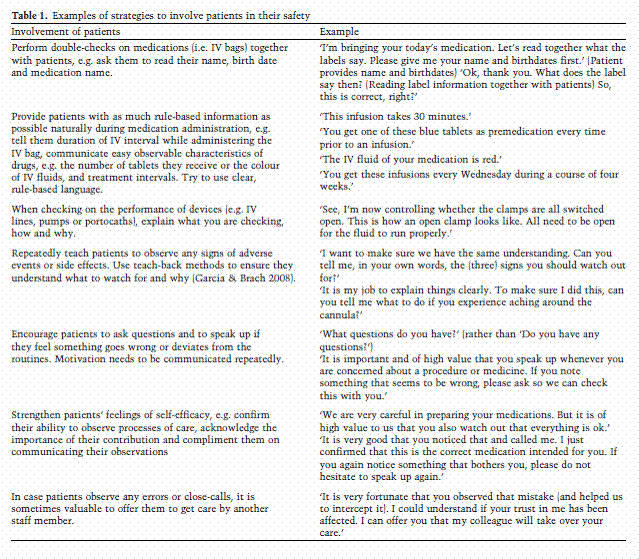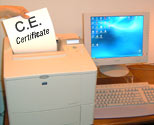
Healthcare Training Institute
- Quality Education since 1979
CE for Psychologist,
Social Worker, Counselor, & MFT!!

Manual of Articles Sections 1 - 9
Section 8
Medication Errors in Chemotherapy: incidences, types and involvement of patients in prevention: Review of Literature
|
| |
Medication errors are among the most serious single class of errors and cause considerable harm (von Laue et al. 2003b; Runciman et al. 2003). Kopp et al. observed one error resulting in a potential or actual, preventable adverse drug event for every five doses of medication administered in intensive care (Kopp et al. 2006). While any class of drugs is susceptible to errors, chemotherapy presents special dangers because: (1) many drugs have a narrow therapeutic index; (2) are toxic even at therapeutic dosages; (3) chemotherapy regimens are highly complex; and (4) cancer patients are a vulnerable population with little tolerance (Muller 2003). This suggests that cancer patients may be severely affected by medication errors.
Methods:
The databases Medline and Cinahl were searched for articles published in English or German between 1990 and 2008. The search strategy consisted of MeSH terms related to ‘adverse events’ (‘Iatrogenic Disease/prevention and control’ OR ‘Medical Errors/prevention and control’ OR ‘Medical Errors/adverse effects’ OR ‘safety management’), combined (AND) with MeSH terms related to ‘chemotherapy’ (‘Antineoplastic Agents’ OR ‘Neoplasms/drug therapy’) or the equivalent MeSH terms provided in the databases. This search yielded 112 hits.
Results:
Medication administration errors were defined as ‘preventable mistakes in drug administration due to errors originating in ordering, dispensing, or administering’, and included administration of the wrong drug, the wrong dose, wrong route, medication to which the patient had a known allergy, and medication with a known significant interaction with other medications the patient received.
During the 2-year prospective study, nurses recorded 141 medication administration errors in 4.752 patient admissions (0.03 medication administration errors/patient admission) or 0.04% of medication administrations. 41% were nurse administration errors (predominantly omitted medications and wrong doses), 21% were errors in order writing or transcription (predominantly pharmacy errors) and 38% were errors in medication dispensing (predominantly nursing dispensing errors such as incorrect dose or wrong medications). The comparably low incidence of medication administration errors may have been due to self reporting of nurses or due to preinstalled safety guidelines.
Medication errors have also been observed in paediatric oncology: Pichon et al. analysed transcription errors in a ‘paper-based’ Swiss paediatric onco-haematology unit and revealed errors to be common (Pichon et al. 2002). At the first transcription, 12% of chemotherapy orders had transcription errors. The most common types of errors were missing parenteral formulations (31% of errors) and unreadable transcriptions (25% of errors). At the second transcription, 6.3% of chemotherapy prescriptions included errors, predominantly wrong doses (86%).
An analysis of the MEDMARX database, a voluntary error reporting system in the USA, revealed that of the 310 paediatric chemotherapy error reports included in the database, 85% reached the patient and 16% required additional monitoring or intervention (Rinke et al. 2007). Nearly half of errors occurred in medication administering (48%), followed by dispensing (30%) and prescribing (10%). Improper dose, wrong time, omission and wrong administration route were the most common types of errors. Chemotherapy agents most commonly involved in error reports were methotrexate (15%), cytarabine (12%) and etoposide (8%).
Professionals involved in administration of chemotherapy seem to be well aware of the occurrence of mistakes and errors. For example, Schulmeister surveyed oncology nurses involved in patient care and chemotherapy administration in the USA about their personal experience with errors (Schulmeister 1999). Chemotherapy medication errors were reported to have occurred in the workplace of 63% of the respondents in the previous year, and 140 errors were described in total. Common errors include under- and overdosing (39% of errors), schedule and timing errors (21%), wrong drugs (18%), chemotherapy given to the wrong patients (14%) and other incidents, such as infusion-rate errors, omission of drugs or hydration, improper preparation of drugs. 10% of errors required medical intervention and prolonged hospital stays.

The crucial element is not to push all patients to engage in all aspects of safety, but to provide those able and willing to participate with the necessary information and support to do so. Table 1 provides some practical examples of activities to engage patients in their safety. It is important that these steps are conducted in an appropriate atmosphere that acknowledges the value of patients’ work, are integrated into the natural course of communication and that activities are repetitive to provide opportunities for training.
It needs also be continuously ensured that activities to involve patients leave no room for shifting responsibility for safety from providers to patients. An ongoing study by the authors currently addresses the feasibility of strategies to involve patients both from the patient’s and the professional’s perspective.
Conclusion
Medication errors in chemotherapy occur frequently, many of which are administration errors and thereby frequently observable by patients. Besides professional activities to error incidence reduction, such as computerized order entry systems or critical incidents reporting, patients are a valuable resource to detect and intercept administration errors to identify risky routines. Data confirms that patients commonly identify deviations from routines and then act to intercept potentially errant administration of medication. However, evidence on interventions to systematically engage patients in the prevention of errors in chemotherapy is scant. Clinical staff plays a vital role in the information, motivation and encouragement of patients to engage in their safety.
--SCHWAPPACH, D. B., & WERNLI, M. M. (2010). Medication errors in chemotherapy: incidence, types and involvement of patients in prevention. A review of the literature. European Journal Of Cancer Care, 19(3), 285-292. doi:10.1111/j.1365-2354.2009.01127.x
=================================
Personal
Reflection Exercise #8
The preceding section contained information
about medication errors in chemotherapy. Write three case study examples
regarding how you might use the content of this section in your practice.
QUESTION 8
What four special dangers does chemotherapy present? Record the letter of the correct answer the
for this course
Forward
to
Back to



